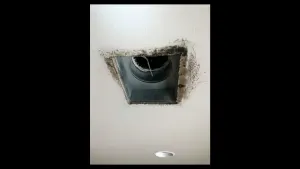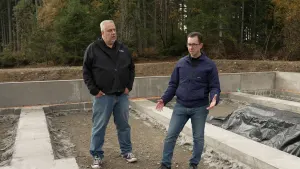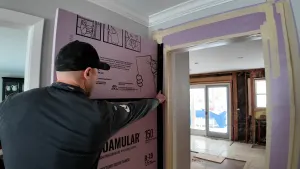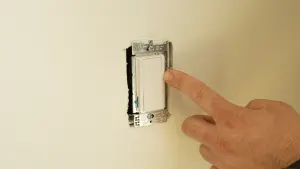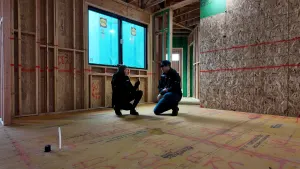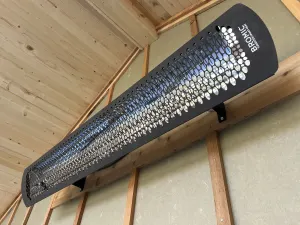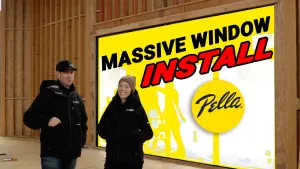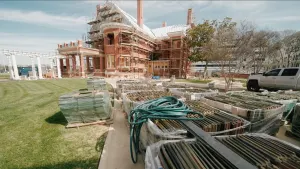This is a follow up to my first post titled Pre-Drywall Moisture Meter Check.
What do you do if you have wet framing lumber?
 |
| Not unusual to see a framing crew working in the rain in the Pacific Northwest. In Texas we call it a day and go home! |
First, if you see standing puddles and soaked framing, don’t move onto the next stage of construction! Next, pull out your moisture meter and map the house.
 |
| Use a sharpie to record the date & reading on the studs to “map” the house’s moisture levels. |
If your moisture meter is reading 18%+ on the framing it’s too wet and needs to dry. So. how do we get that number to the 12%-14% range that I want to see prior to hanging sheetrock? (ideally all 12% or less)
There are 4 tools you can use to dry your wet framing lumber. Time, Air movement, De-humidification, and Heat.
1. Time. Given enough time (assuming it’s not getting wet again) that wet lumber will naturally dry. If the outdoor temps are above 60 degrees F then it won’t take much time. Maybe 3-5 weeks to get from 18% down to 14%. But, if it’s cold & rainy outside it might take 6-12 weeks. If it’s below 32 degrees F it will take a loooong time to dry.
2. Air movement. This is the first and easiest tool in the drying toolbox. I own several carpet blower fans and I highly recommend every builder in every climate own a few of these.
 |
| These carpet dryer fans are incredibly useful for many stages of construction. |
| Here’s a wet framed house getting dried with a team of fans. Notice the Dehumidifier in the background. Photo courtesy of Kelly Stelk with Home Certified in Portland, OR. |
The easiest and cheapest way to dry a wet framed house is to set up fans to blow on the wet areas of the house. I’ve found that if the weather is above 45 degrees F during the day then a fan blowing on a wet area of framing will dry down about .5-1% per day. So if you’re getting moisture meter readings in the 18-20% range you’ll need a solid week of drying fans to get the numbers down to the 14% and below range. (Read on if you have lower outdoor temps you deal with.)
When I do this process I chain/padlock the fans to the framing and run them 24/7 till I’m done.
3. De-humidification. I also am a big proponent of builders owning dehum equipment. Here’s a job site photo of my Dri-Eaz LGR Evolution.
 |
| I use my Dehum’s all through construction in the hot/humid South. |
 |
| Here’s why you need a dehum. My Humidity/Temp Pen reading 73 degrees F, but 83.7% humidity today. |
Blowing air will work to a certain extent, but controlling the humidity is the key to really drying down your framing. If the air outside is above 60% humidity I recommend shutting down your windows/doors and running your fans in combination with a dehumidifier like mine above.
4. Heat. After I posted my last blog post on moisture meter testing I got asked by several Northern builders about wet & frozen lumber. This is really where the heat is needed. But, we can’t just use any heat. It’s common to see propane heaters on the job site for temporary heat, but these aren’t good for drying. Consider that a typical propane heater adds 1 gallon of moisture to the air for every hour of run time. What you really need is combustion OUTSIDE the house and dry/hot air blowing in.
 |
| Photo courtesy of Home Certified in Portland, OR |

 Share on facebook
Share on facebook Tweet
Tweet Email
Email Share on Linkedin
Share on Linkedin




